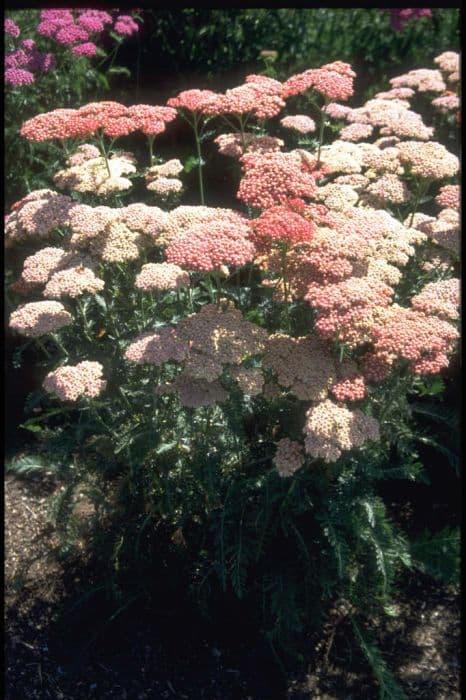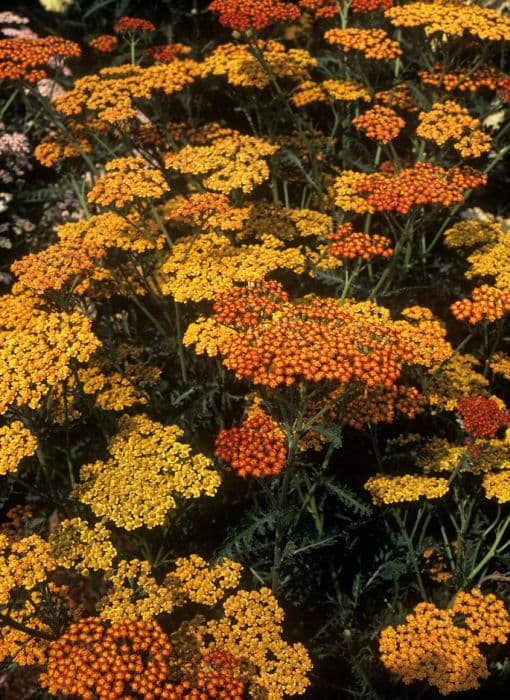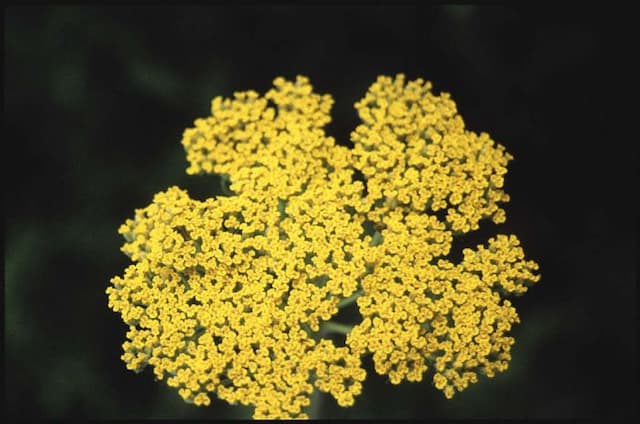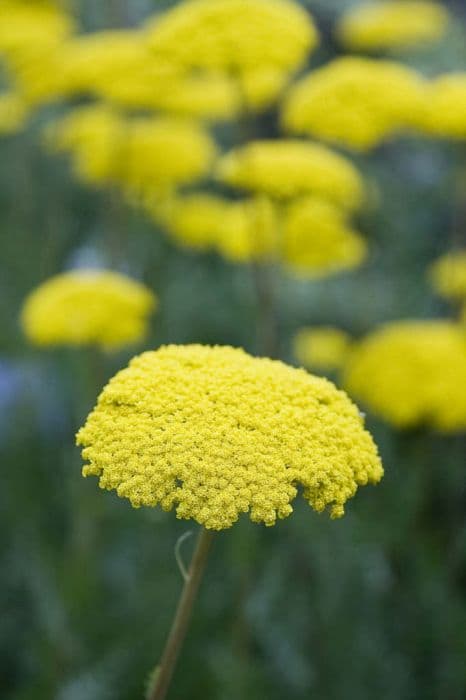Italian Aster Aster amellus 'Jacqueline Genebrier'

ABOUT
The Aster amellus 'Jacqueline Genebrier' is an attractive perennial known for its showy flowers and dense, bushy form. This variety of the Italian aster can be characterized by its vibrant blooms and hearty foliage. It produces an abundance of large daisy-like flowers that exhibit a striking color palette: purplish-blue petals surround a vivid yellow central disc, giving a cheerful and eye-catching contrast. The petals are slender and slightly recurved, which adds to the plant's overall elegance. Its leaves are lance-shaped, with a deep green color that provides a perfect backdrop to the colorful autumnal blossoms. The foliage has a slightly rough texture, which is typical of many aster varieties. The plant has a robust and upright growth habit, with stems that are sturdy enough to hold up the generous clusters of flowers without the need for staking. 'Aster amellus 'Jacqueline Genebrier' blooms in the late summer to early fall, providing a great source of late season nectar for pollinators like bees and butterflies. As a cultivated variety of the Italian aster, it benefits from being a relatively low-maintenance plant that is also resistant to many of the diseases that can affect asters. In essence, Aster amellus 'Jacqueline Genebrier' is admired for its ornamental qualities which include the radiant blooms and lush foliage that contribute to its popularity among gardeners looking to add a splash of late-season color to their landscapes.
About this plant
 Names
NamesFamily
Asteraceae
Synonyms
Italian Aster, European Michaelmas Daisy
Common names
Aster amellus 'Jacqueline Genebrier'.
 Toxicity
ToxicityTo humans
The common name for Aster amellus 'Jacqueline Genebrier' is Italian aster. This plant is not commonly known to be toxic to humans. Therefore, if ingested, it is unlikely to cause serious harm or poisoning. As with any non-food plants, individual sensitivity such as allergic reactions or gastrointestinal upset could occur if parts of the plant are consumed.
To pets
The common name for Aster amellus 'Jacqueline Genebrier' is Italian aster. This plant is generally considered non-toxic to pets. It is not known to cause poisoning in pets if ingested. However, individual pets can react differently to various plants, and symptoms like mild gastrointestinal upset could occur due to ingestion, particularly if consumed in large quantities.
 Characteristics
CharacteristicsLife cycle
Perennials
Foliage type
Deciduous
Color of leaves
Green
Flower color
Purple
Height
2 feet (0.61 meters)
Spread
1 foot 6 inches (0.46 meters)
Plant type
Herb
Hardiness zones
4
Native area
Europe
Benefits
 General Benefits
General Benefits- Attracts Pollinators: The Aster amellus 'Jacqueline Genebrier' is known for attracting bees, butterflies, and other beneficial insects, which helps with the pollination of plants and biodiversity in the garden.
- Aesthetic Appeal: With its vibrant purple flowers, this plant adds color and visual interest to gardens and landscapes, enhancing curb appeal.
- Low Maintenance: It is relatively easy to care for, requiring minimal upkeep once established, making it a convenient choice for gardeners of all skill levels.
- Drought Tolerance: Once established, it has good resistance to drought, reducing the need for frequent watering and making it suitable for xeriscaping.
- Seasonal Interest: The European Michaelmas daisy typically blooms in late summer to fall, providing a splash of color when many other plants have finished flowering.
- Wildlife Habitat: Its structure and foliage provide shelter for small wildlife, such as birds, creating a more dynamic and balanced ecosystem.
 Medical Properties
Medical PropertiesThis plant is not used for medical purposes.
 Air-purifying Qualities
Air-purifying QualitiesThis plant is not specifically known for air purifying qualities.
 Other Uses
Other Uses- Aster amellus 'Jacqueline Genebrier', commonly known as Italian Aster, can be used in natural dye production. The flower heads contain pigments that give varying shades of color to textiles when used as a dye.
- In craft projects, the dried flowers of Italian Aster can be incorporated into potpourri, giving a visual appeal and a subtle, pleasant fragrance to the mixture.
- The plant's vibrant and long-lasting flowers make it an excellent choice for cut flower arrangements, adding a splash of color to bouquets and floral decor.
- Italian Aster can serve as an educational tool in botany and horticulture classes, illustrating plant anatomy, growth habits, and the importance of pollinators in the ecosystem.
- The flowers can be used in photography, providing a picturesque backdrop or subject due to their distinctive appearance and range of colors.
- Italian Aster, being attractive to butterflies, can be integrated into butterfly gardens to aid in the study and conservation of local butterfly populations.
- The sturdy stems and attractive foliage make Italian Aster a good candidate for creating living walls or vertical gardens that can enhance urban spaces.
- When planted en masse, Italian Asters can function as a ground cover, reducing soil erosion and suppressing weed growth in garden beds.
- Italian Asters can be used in seasonal festivities, where their flowers can decorate venues for events such as autumn harvest festivals or spring celebrations.
- For hobbyist beekeepers, planting Italian Aster can provide an additional food source for bees, helping to support honey production and bee colony health.
Interesting Facts
 Feng Shui
Feng ShuiThe Italian Aster is not used in Feng Shui practice.
 Zodiac Sign Compitability
Zodiac Sign CompitabilityThe Italian Aster is not used in astrology practice.
 Plant Symbolism
Plant Symbolism- Charm and Patience: The Aster amellus 'Jacqueline Genebrier', commonly known as Italian Aster, often symbolizes charm and patience, reflecting the delicate beauty and persistence of the flowering plant.
- Elegance: With its refined and poised blossoms, Italian Aster is associated with elegance and a graceful presence in gardens and floral arrangements.
- Wisdom: In flower language, Asters are considered to embody wisdom. The delicate structure of the Italian Aster can be seen as a reminder to value and seek knowledge.
- Love and Devotion: Italian Asters are sometimes used to signify love and devotion, often representing a fidelity and a lifelong commitment in romantic relationships.
- Remembrance: Because they often bloom in the late summer and fall when many other flowers have passed, Italian Asters can symbolize remembrance, making them suitable for occasions that honor past memories.
 Water
WaterThe Italian Aster should be watered regularly, allowing the soil to dry slightly between waterings. During active growth in spring and summer, watering once a week with approximately one gallon per plant should be sufficient, depending on the size of the plant and the weather conditions. It's important to avoid overwatering, as this can lead to root rot. Decrease the frequency of watering as the plant goes dormant in the fall and winter months, providing water every other week or less, depending on the climate. Always check the top inch of soil for dryness before watering again.
 Light
LightFor optimal growth, the Italian Aster prefers full sun but can tolerate partial shade. The best location would be a spot that receives at least 6 to 8 hours of direct sunlight each day. If grown indoors, place it near a south-facing window where it will receive ample sunlight.
 Temperature
TemperatureThe Italian Aster thrives in a temperature range of 50 to 75 degrees Fahrenheit. It can tolerate temperatures down to 20 degrees Fahrenheit, but frost can cause damage to the plant. Ideally, maintain an environment where temperature fluctuations are minimal to support healthy growth.
 Pruning
PruningPrune the Italian Aster to maintain its shape and to encourage bushier growth and more blooms. Deadheading spent flowers regularly can also promote further blooming. Prune the plant back by about one-third its height after flowering in the fall to prepare it for winter and encourage vigourous growth in the spring.
 Cleaning
CleaningAs needed
 Soil
SoilItalian Aster prefers well-draining soil rich in organic matter with a pH of 5.8 to 6.5. A mix of garden soil, compost, and perlite or sand would be ideal to ensure proper drainage and fertility.
 Repotting
RepottingItalian Aster should be repotted every 2-3 years to refresh the soil and accommodate root growth. It's best done in the spring before new growth starts.
 Humidity & Misting
Humidity & MistingItalian Aster thrives in moderate humidity conditions typical of outdoor environments but does not require specific humidity control.
 Suitable locations
Suitable locationsIndoor
Ensure bright light, well-drained soil, and regular watering.
Outdoor
Plant in full sun to part shade, in well-drained soil.
Hardiness zone
4-8 USDA
 Life cycle
Life cycleAster amellus 'Jacqueline Genebrier', commonly known as Italian aster, begins its life cycle as a seed, typically germinating in the spring under appropriate temperature and moisture conditions. After germination, the seedling emerges and develops into a vegetative stage, where the plant focuses on leaf growth, establishing a strong root system, and developing a foliage clump. During the late summer to fall seasons, the Italian aster enters the flowering stage, producing characteristic daisy-like blossoms that are lavender to violet in color, attracting pollinators such as bees and butterflies. After pollination, the flowers produce seeds, which are then dispersed by wind, insects, or other mechanisms. The plant enters a period of dormancy during the winter, conserving energy and resources until the favorable growth conditions return in the spring. For perennials like the Italian aster, this cycle of vegetative growth, flowering, seed production, and dormancy repeats annually throughout the lifespan of the plant.
 Propogation
PropogationPropogation time
Spring to Summer
The most popular method of propagating Aster amellus 'Jacqueline Genebrier', commonly known as the Italian aster, is by division. This is ideally carried out in the early spring as the soil begins to warm but before the plant has started rapid growth. To propagate by division, carefully lift the parent plant from the soil. Gently separate the clumps into smaller sections, each with several shoots and a portion of the root system attached. Replant these divisions immediately at the same depth they were originally growing, spacing them about 12 to 18 inches (about 30 to 46 centimeters) apart to give room for growth. Water them thoroughly after planting to help establish the new divisions. This method is quite efficient as it helps rejuvenate older clumps that may have become woody or less vigorous.









